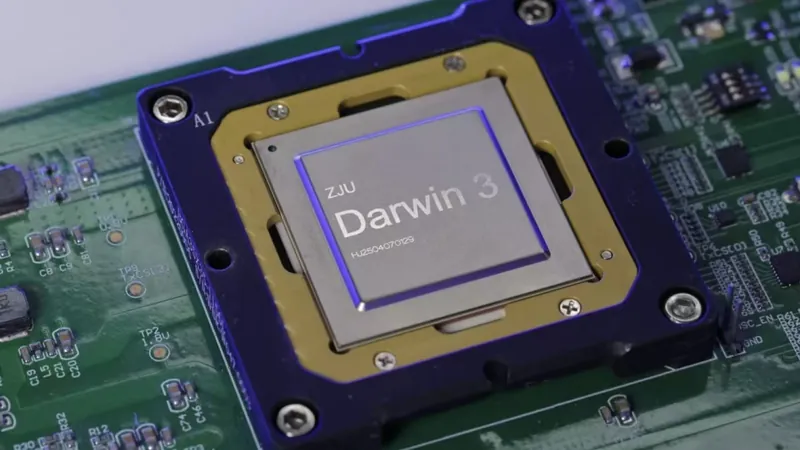
Meet China's 'Darwin Monkey': The Supercomputer Inspired by Primate Brains
2025-08-28
Author: Jia
China's Groundbreaking Brain-Inspired Supercomputer
In a stunning leap for artificial intelligence, scientists in China have introduced the Darwin Monkey, a supercomputer modeled after the brain structure of a monkey. Dubbed 'Wukong,' this cutting-edge system boasts an astounding two billion artificial neurons and over a hundred billion synapses, aligning its capabilities with those of a macaque's neural architecture.
A Leap Toward Artificial General Intelligence
Researchers are optimistic that Darwin Monkey will not only aid neuroscientists in their studies but also pave the way toward achieving artificial general intelligence (AGI)—an AI that can match human intelligence.
Revolutionary Neural Processing: The Power of Spiking Neural Networks
Unlike traditional artificial neural networks that use binary values to process data, Darwin Monkey operates on spiking neural networks (SNNs). These systems mimic the way mammalian brains transmit signals, responding to electrical impulses with bursts of activity. This biological approach makes the Darwin Monkey a unique player in the computing world, capable of parallel data processing and potentially superior to conventional supercomputers.
An Energy-Efficient Juggernaut
Despite its monumental capabilities, researchers report that Darwin Monkey uses only 2,000 watts of power—similar to what is required to operate an electric kettle or hairdryer. This efficiency is enabled by the design of its 960 Darwin III neuromorphic chips, each accommodating up to 2.35 million spiking neurons.
Dominating the Neuromorphic Landscape
Previously, Intel's Hala Point system held the title of the largest neuromorphic computer, with 1.15 billion artificial neurons. While Intel's machine boasts a capability of 20 quadrillion operations per second, comparing these systems directly is challenging due to their differing architectures.
Tackling Cognitive Challenges and Beyond
The Darwin Monkey has already shown promise in complex cognitive tasks such as logical reasoning, content generation, and solving mathematical problems through an AI model created by the Chinese startup DeepSeek. Furthermore, it is being utilized to simulate the brains of various animals, including zebrafish and mice, enhancing ongoing brain research efforts.
Who Made This Happen?
This incredible technological feat was achieved by researchers from Zhejiang University and the Zhejiang Lab, a collaboration established by the Zhejiang provincial government and the tech powerhouse Alibaba Group.


 Brasil (PT)
Brasil (PT)
 Canada (EN)
Canada (EN)
 Chile (ES)
Chile (ES)
 Česko (CS)
Česko (CS)
 대한민국 (KO)
대한민국 (KO)
 España (ES)
España (ES)
 France (FR)
France (FR)
 Hong Kong (EN)
Hong Kong (EN)
 Italia (IT)
Italia (IT)
 日本 (JA)
日本 (JA)
 Magyarország (HU)
Magyarország (HU)
 Norge (NO)
Norge (NO)
 Polska (PL)
Polska (PL)
 Schweiz (DE)
Schweiz (DE)
 Singapore (EN)
Singapore (EN)
 Sverige (SV)
Sverige (SV)
 Suomi (FI)
Suomi (FI)
 Türkiye (TR)
Türkiye (TR)
 الإمارات العربية المتحدة (AR)
الإمارات العربية المتحدة (AR)